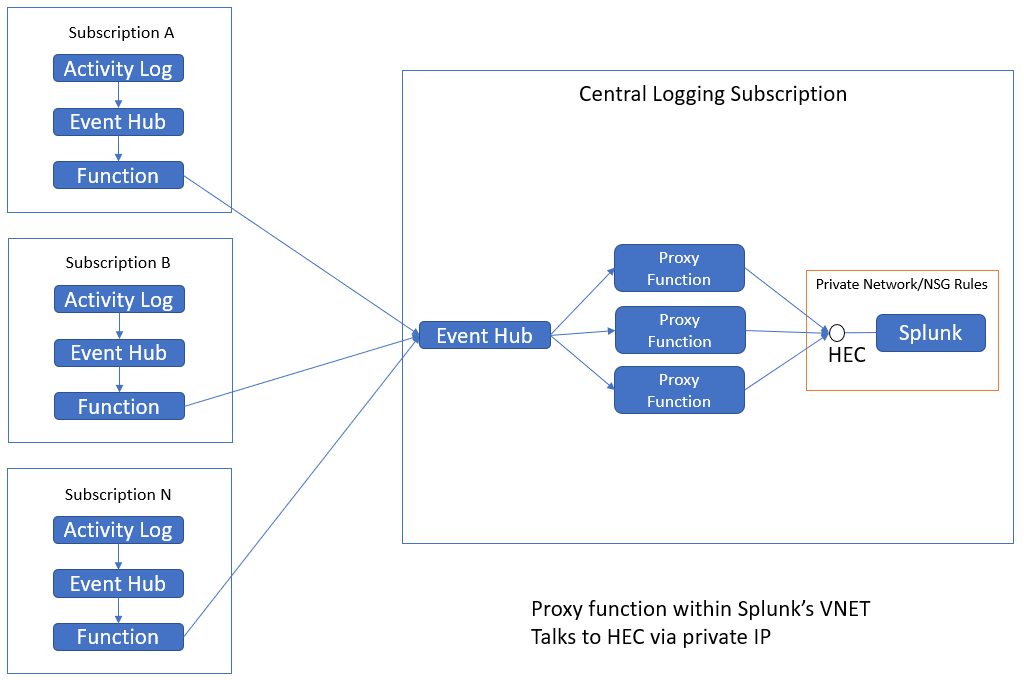The generalized architecture for Splunk includes a cluster of indexers. If using the HEC, the indexers can follow a load balancer. When monitoring a large Azure environment, it's likely that many subscriptions will be monitored by a central Splunk cluster.
Benefits:
- Hide the HEC port from internet port scanners
- An event hub triggered function (such as this proxy) is a hard target
- Isolates Splunk indexers from the telemetry feed
In the diagram, "Activity Log" represents the various data sources that Azure Function for Splunk can ingest. That function can be configured to emit to an event hub which triggers this proxy function, and which in turn emits to Splunk.
Environment Variables
| Parameter Name | Type | Value | Notes |
|---|---|---|---|
| AzureWebJobsScriptRoot | string | /home/site/wwwroot | |
| AzureWebJobsStorage | string | <storage account connection string> | required |
| hubConnection | string | <event hub connection string > | telemetry from Azure Function for Splunk instances |
| input-hub-name | string | collector-to-proxy | matches configuration of collector function |
| FUNCTIONS_WORKER_RUNTIME | string | dotnet | required |
| splunkAddress | string | https://whatever:8088/services/collector | HEC address or LB address |
| splunkToken | string | HEC splunk auth token | |
| splunkCertThumbprint | string | thumbprint of CA cert | |
| CA_PRIVATE_KEY_PASSWORD | string | password | usually provide in docker run |
| CA_CERT_FILENAME | string | splunk_cacert.pfx | combine cert & key |
If splunkAddress starts with https, a certificate in pfx format must be provided in the /site/ca-certificates folder. The first time the function runs, it will load that certificate into the CurrentUser Root certificate store. This repo provides splunk_cacert.pfx generated from the default CA cert & key that Splunk provides with their installation files. To use your own cert, edit the splunkCertThumbprint, CA_PRIVATE_KEY_PASSWORD, and CA_CERT_FILENAME values in the environment.
The provided pfx was created with this command:
openssl pkcs12 -export -out splunk_cacert.pfx -in splunk_cacert.pem -inkey splunk_cacert_key.pem
The private key password for splunk_cacert_key.pem is 'password'.
The happy path for installation is:
docker build --tag whatever/splunkproxyfunction:vsomething .
The first 5 of the environment variables must be specified in the Dockerfile. The last 5 should be specified in the docker run or Kubernetes secrets.
